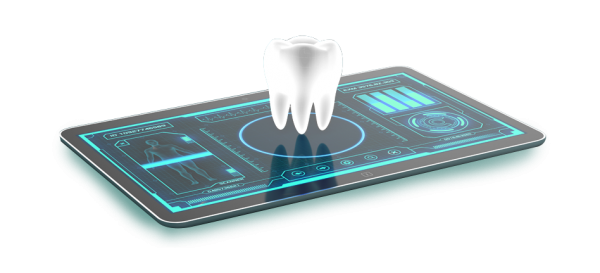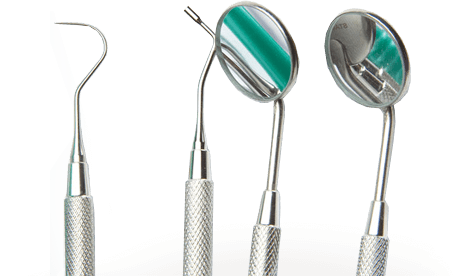
BONE GRAFTING
A bone graft or sinus lift can help you become a better candidate for tooth replacement with dental implants
Have you been told that you aren’t a candidate for dental implants because you don’t have sufficient bone to hold the implant in place? Bone grafting may present a solution.

Bone Grafting
One of the side effects of missing teeth is a deterioration in the bone structure. Since the bone no longer has to do the job of holding a tooth in place, the body no longer sends nutrients to the area, causing the bone to resorb or diminish. As time progresses, the bone in the area weakens and shrinks. Bone grafting is achieved by taking your own bone (autograft), another human’s bone (allograft), animal’s bone (xenograft), or synthetic bone (alloplast) and placing it into the defect. These grafts come in block form or particulate form. Each is used differently depending on the type of defect present.
Many times we use an allograft. The advantage of an allograft is that it prevents a patient from having a second surgery site (the donor area). A bone graft forms scaffolding for one’s own bone to grow into. On average, this takes three months for the lower jaw and five to six months for the upper jaw and results in the patient’s own bone filling in the defect.
A bone graft is highly recommended following the extraction of a tooth to prevent defects from forming. This maintains the height and width of the bone to allow the placement of an implant or create an ideal site for a pontic, the replacement tooth used in a bridge. This treatment is sometimes called ridge preservation.
Following the extraction, the bone graft is placed, and a protective membrane is sutured into place.

Sinus Lift
A sinus lift procedure may be recommended when the sinuses in the upper jaw drop down into an area, creating a situation where the bone may not be abundant enough to support an implant. Some sinus lifts can be done at the time of implant placement (internal) or prior to placing an implant (external). This procedure involves lifting the sinus membrane while keeping it intact and depositing bone underneath the membrane. By doing this, the bone height is increased, allowing for an implant to be placed and not invade the sinus.
We’ve used x-rays to illustrate the sinus lift procedure below so you can gain a clearer idea of how the procedure works.
Convenience
Convenience
We make it easy and convenient to schedule appointments and make payments online with our patient connect portal.
Advanced Technology
Advanced Technology
We have the latest dental technology to care for all of your dental needs in-house.
Comfort
Welcoming Atmosphere
We strive to create a stress-free experience curated by our friendly and welcoming staff.

Get Started
New Patients
Are you a new patient to James Island Dental Associates? Get started now by following the link and completing the requested forms to make your visit easy and stress-free.
Current Patients
Get Started
New Patients
Are you a new patient to James Island Dental? Get started now by following the link and completing the requested forms to make your visit easy and stress-free.
Current Patients
We make is easy for existing patients of James Island Dental to easily access medical information, schedule appointments, and make online payments. Log in now.

EXCELLENTTrustindex verifies that the original source of the review is Google. Very pleased with my visit today. Dr Brown and Christina could not have been any better.Posted onTrustindex verifies that the original source of the review is Google. As one who does not like visits to the dentist I can attest to the dedication and professionalism of James Island Dental Associates. I have been going there for eight years and will continue to do so. Kudos!Posted onTrustindex verifies that the original source of the review is Google. Visit, as usual, was fine. Great hygenist and Dr. Weir took time, checked on my situation and thus, visit was overall fine. Looks that way too. ThanksPosted onTrustindex verifies that the original source of the review is Google. Great experience as always!Posted onTrustindex verifies that the original source of the review is Google. Kit is greatPosted onTrustindex verifies that the original source of the review is Google. Great place to get dental care!Posted onTrustindex verifies that the original source of the review is Google. I’ve been a patient for over 25 years and have always been treated like family. Would highly recommend.
MORE QUESTIONS?
Periodontal disease has a number of symptoms. In its earliest stages, you might experience bad breath or bleeding when you brush and floss. As the disease progresses, however, bone loss is likely. This bone loss can lead to all kinds of problems, including loose and lost teeth. In fact, American adults lose more teeth to periodontal disease than any other dental problem.
Periodontal disease is a treatable disease, not a curable one. We recommend evaluations that include radiographs (x-rays) and charting over time to determine the extent of bone loss and decide which methods are best for treating the disease in each individual case.
Treatment for Periodontal Disease
Treatment can involve deep cleanings and/or periodontal laser therapy, both of which our office offers. We recommend you stay on a 3- to 4-month recall for periodontal maintenance so we can examine and stay on top of the disease.
If you have lost teeth and need to replace them, dental implants are a highly effective solution – especially because they help stop the process of bone loss! If you have already lost bone, however, it may not be possible to place an implant. This can be solved with bone grafting, and if you are a candidate, we will be sure to discuss all your options with you so you can make an informed decision about your health.






